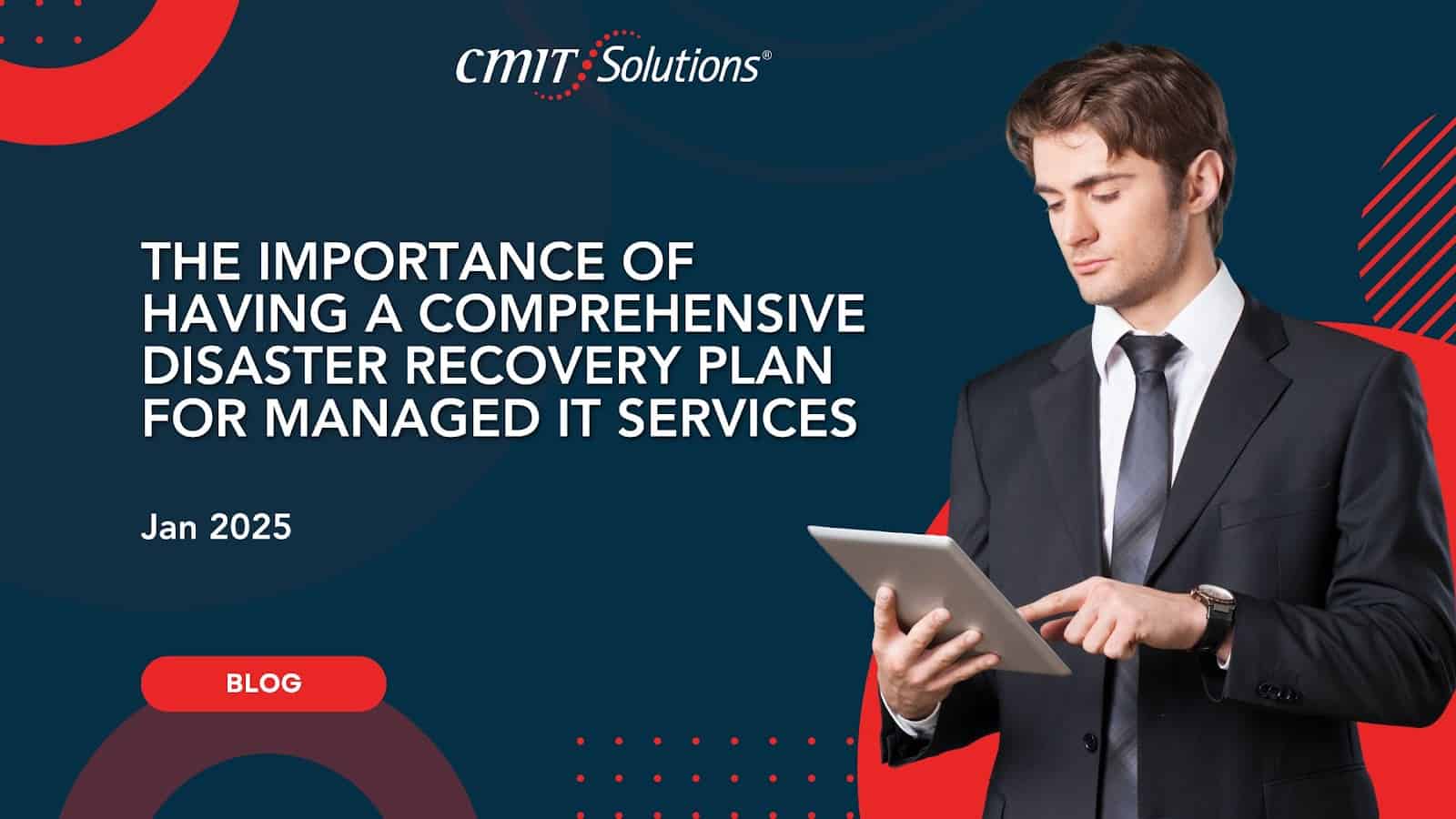In today’s interconnected business environment, a disaster recovery (DR) plan is no longer optional. It’s a critical component of managed IT services that ensures businesses can bounce back from unexpected disruptions. Let’s dive into what a disaster recovery plan entails and why it’s vital for modern organizations to invest in robust DR strategies.
What is Disaster Recovery in Managed IT Services?
Disaster recovery refers to the process of restoring IT systems and operations after a catastrophic event. It focuses on maintaining business continuity and minimizing downtime, allowing organizations to recover quickly from natural disasters, cyberattacks, or technological failures.
A well-structured DR plan is essential for businesses that rely heavily on IT infrastructure and digital data. As CMIT Boston, Newton, and Waltham emphasizes, a proactive approach to disaster recovery is a cornerstone of successful IT management.
Why is a Disaster Recovery Plan Important?
1. Business Continuity
Disruptions to IT systems can lead to costly downtime, impacting revenue, customer trust, and operational efficiency. A solid DR plan ensures business continuity by providing a roadmap to quickly restore systems and services.
Read more about ensuring business continuity through data backup and disaster recovery.
2. Compliance Requirements
Many industries are subject to stringent regulations that require organizations to have disaster recovery plans. Non-compliance can result in hefty fines and reputational damage. Learn how compliance-driven cybersecurity strategies integrate with DR plans.
3. Cybersecurity Resilience
With cyberattacks like ransomware on the rise, a DR plan provides a safety net for recovering encrypted or stolen data. At CMIT, we understand the importance of protecting businesses from ransomware attacks.
4. Cost Savings
While implementing a DR plan involves an upfront investment, the cost of unplanned downtime or lost data far outweighs these initial expenses. Organizations can save significantly by mitigating risks proactively.
Explore how managed IT services boost efficiency and reduce risks.
5. Customer Trust and Loyalty
A reliable DR plan demonstrates a company’s commitment to its customers. When businesses can quickly recover from disruptions, customers are more likely to trust and remain loyal to their services. The ability to maintain uninterrupted service in the face of adversity is a significant competitive advantage.
Elements of an Effective Disaster Recovery Plan
A comprehensive DR plan incorporates preventative, detective, and corrective measures to address potential disruptions:
Preventative Measures
- Regularly back up critical data.
- Monitor servers for compliance issues and vulnerabilities.
- Employ advanced tools like AI in cybersecurity.
- Conduct regular risk assessments to identify and mitigate potential threats.
- Establish clear communication protocols to ensure that all employees are aware of DR procedures.
Detective Measures
Detective measures are designed to identify potential threats in real time. For instance, utilizing network monitoring and management tools can detect anomalies and alert teams to take corrective action promptly. These measures include:
- Real-time alerts for suspicious activities.
- Automated threat detection systems to flag vulnerabilities before they escalate.
- Regular system audits to uncover hidden risks.
Corrective Measures
Corrective actions ensure that recovery procedures are executed efficiently during a disruption. This includes leveraging virtual disaster recovery solutions to minimize downtime and restore systems. Corrective measures may also involve:
- Deploying pre-tested recovery protocols to ensure seamless restoration.
- Engaging third-party experts for advanced troubleshooting.
- Conducting post-disruption evaluations to improve future DR plans.
Types of Disaster Recovery Solutions
1. Data Backups
Backing up critical data to a secondary location is the foundation of any DR plan. However, backups alone cannot guarantee complete recovery. Discover why businesses need comprehensive IT services for holistic protection.
2. Disaster Recovery as a Service (DRaaS)
DRaaS involves outsourcing disaster recovery efforts to a third-party provider. This solution ensures seamless recovery by hosting backups in the cloud. Read about how cloud services optimize business operations.
3. Virtual Disaster Recovery
Virtual DR allows organizations to replicate their IT infrastructure on a virtual machine (VM), enabling quick restoration of systems. Frequent updates ensure this solution remains effective. Learn more about modernizing IT infrastructures.
4. Hybrid DR Solutions
Hybrid DR solutions combine on-site and cloud-based strategies, offering a balanced approach to disaster recovery. This model ensures local accessibility and off-site protection, making it ideal for businesses with complex IT environments. Explore how hybrid solutions enhance resilience.
Real-World Examples of Disasters
Natural Disasters
Events like hurricanes and earthquakes can severely impact physical infrastructure. Organizations should invest in cloud-first strategies to minimize dependency on physical data centers.
For instance, during Hurricane Sandy, many businesses without robust DR plans experienced prolonged downtime, leading to financial losses and operational setbacks. Companies with cloud-based DR solutions were able to resume operations much faster.
Cyberattacks
Cyber threats such as phishing and ransomware can disrupt operations. Implementing best practices outlined in cybersecurity strategies is essential. For example, a mid-sized firm in Boston recently avoided a ransomware crisis by employing proactive DR measures from CMIT Solutions.
Technological Failures
Power outages and system errors can cause significant downtime. Explore how IT support strategies mitigate these risks. For instance, redundant power supplies and automated failover systems can significantly reduce recovery times.
Proactive Disaster Recovery Planning
Creating a DR plan involves collaboration across departments, leveraging expertise from IT professionals, and conducting regular training sessions for employees. Learn how CMIT’s customized solutions enhance disaster preparedness.
Steps to Build a DR Plan
- Risk Assessment: Identify vulnerabilities and prioritize critical systems.
- Strategy Development: Choose the right combination of backup and recovery solutions.
- Implementation: Deploy technologies like DRaaS and virtual DR.
- Testing: Regularly test DR protocols to ensure they are effective.
- Optimization: Continuously refine the plan based on feedback and emerging threats.
Integrating Disaster Recovery with Managed IT Services
CMIT Boston, Newton, and Waltham offers tailored managed IT services that incorporate disaster recovery as a core component. From healthcare providers to startups, our solutions ensure data security and operational resilience.
Explore our approach to [enhancing productivity](https://cmitsolutions.com/boston-ma-1020/blog/work-smarter-not-harder-supercharge-your-teams
Conclusion
A disaster recovery plan is more than just a safety net; it is a strategic necessity for modern businesses. By integrating preventative, detective, and corrective measures, businesses can safeguard their operations against unforeseen disruptions. Whether dealing with natural disasters, cyberattacks, or technological failures, having a robust disaster recovery strategy ensures minimal downtime, regulatory compliance, and continued customer trust.
At CMIT Boston, Newton, and Waltham, we understand that every business has unique needs. That’s why our disaster recovery solutions are tailored to provide comprehensive protection, combining the best practices in data backup, virtual DR, and managed IT services. Let us help you build resilience and confidence in the face of uncertainty.
Contact us today to learn how we can secure your future with a reliable and effective disaster recovery plan.
Let me know if you’d like this content incorporated into the document.





